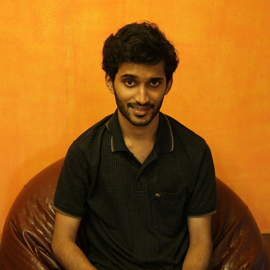Euthanasia bill: the government actually wants to know what you think

- Health ministry is seeking public opinion on a bill about passive euthanasia
- Passive euthanasia involved a decision to withhold treatment and the patient eventually dies
- So far there has been only a SC guideline on how to process euthanasia
- What are the clauses in the new bill on euthanasia that is being proposed?
- How does euthanasia work around the world?
If you visit the website of the Ministry of Health and Family Welfare, on the right side you will find, enclosed within a tab, a link to a draft bill that invites the general public to comment on.
The bill is one of the most controversial topics in the sphere of health, euthanasia. Passive euthanasia to be precise.
The website gives you all the information you need, from the etymology of the word euthanasia, the difference between passive and active euthanasia, to why the government has sort the opinion of the masses.
Read: Centre tells SC it supports passive euthanasia
In short, active euthanasia means administering a lethal injection that would kill the patient while passive euthanasia involves withholding a treatment or antibiotic that would again, kill the patient.
Passive euthanasia comes in two forms. It could be voluntary, where the patient decides his own fate, or non-voluntary where the patient's consent is unavailable, such as when he is in coma.
The government is not considering active euthanasia to avoid misuse of the law by "unscrupulous individuals to attain ulterior motives."
The last time the government deliberated on the matter was after the Law Commission of India submitted a report on "The Medical Treatment of Terminally-ill Patients (Protection of Patients and Medical Practitioners) Bill 2006.
Subsequently, the Supreme Court of India in its judgement on 7 March 2011, laid down a list of guidelines to 'process euthanasia' in cases of incompetent patients, and stated that the said procedure should be followed until Parliament comes up with a legislation.
The Supreme Court had then stated that for cases of passive euthanasia, the closest relative or patient (if in capacity), should approach the court. The court would then consult and receive expert opinion from medical experts including psychiatrists and come up with a decision. The court would also have to inform the immediate relatives of the patient.
Post the Supreme Court order, the Law Commission proposed a legislation and prepared a draft bill titled, The medical treatment of terminally ill patients (protection of patients and medical practitioners) Bill.
Based on the recommendations of the Law Commission, the government is now mulling over enacting a law on passive euthanasia, and before making a decision it is soliciting public opinion and comments.
More about the bill
Before you decide on whether euthanasia is good for the thousands who may be in such a state of pain that warrants them the right to take a decision about their treatment and their fate, here are a few caveats and restrictions that the bill has put in place:
Only for terminally ill patients: The decision on whether to allow for passive euthanasia are for patients who are "terminally ill" only. A terminally ill patient is a patient who suffers from "illness, injury or degeneration of physical or mental condition" which according to reasonable medical opinion, will inevitably cause the death of the patient concerned. Or it is an illness which has caused a persistent and "irreversible vegetative condition under which no meaningful existence of life is possible for the patient." In case of patients within the age group for 16-18, the consent of parents is also additionally required.
Informed decision: Before taking any decision on the matter, the medical practitioner has to inform the spouse, parent or the closest relative about the need for passive euthanasia, three days prior to withdrawing or withholding the treatment that would eventually end the patient's life.
Judicial oversight: In cases where the patient cannot make an informed decision due to his physical and mental state, a legal permission needs to be sought from a high court by the closest relative, legal guardian or the medical practitioner. The order should disposed by the high court within a month.
A panel of medical experts will be set up in each state comprising of experts in medicine, surgery and critical care. The high courts will then seek their opinion when cases for euthanasia are brought before them.
Also read: Experts highlight ambiguity in Centre's draft bill on euthanasia
Legal protection: Once the high court permits for passive euthanasia, the patient's guardian or closest relative who approached the court as well as the medical practitioner involved, would be protected from being deemed guilty of any offence for his decision.
Scope for confidentiality: The high court would also mandate for the confidentiality of the patient and those involved including the medical practitioner who would take the final call, as well as the medical experts the court has consulted with.
The Medical Council of India, may from time to time review and modify the guidelines.
The Aruna Shanbaug case
When discussing euthanasia it is imperative to bring forth the case of Aruna Shanbaug. 43 years ago, Aruna Shanbaug, a nurse who works at KEM Hospital in Mumbai, was sexually assaulted and brutalised by a ward boy in the hospital. She breathed her last on 18 May 2015. For all those years while she lay in a vegetative state, deans and successive batches of nurses spent hours taking care for her and sustained her on a liquid diet.
Moved by her state, journalist Pinky Virani, who also documented Aruna's story, filed a petition under Article 32 before the Supreme Court of India, which empowers an individual to seek redressal for the violation of their fundamental rights, and sought euthanasia for Aruna Shanbaug.
The court, after comprising a medical board and deliberating on the matter, concluded that since the patient was not brain dead and responded in some situations, there was no need for euthanasia. The case however led to the Supreme Court setting up a list of guidelines under which passive euthanasia could be allowed.
International learning
After prolonged deliberations, European countries like Belgium and Netherlands have legalised both passive and active euthanasia, where terminally ill patients are euthanised by administering a poisonous substance. Netherlands allows for euthanasia for anyone above the age of 12, while Belgium extends the right to active euthanasia for all age groups.
Read more: No order on euthanasia, SC passes the decision to the Parliament
Both countries allow for a person to end his life in dignity after having received every available type of palliative care.
Switzerland and the United States of America have legalised euthanasia.
In the aforementioned countries, the law warrants for permission from the closest relative, in case the patient is not in a state to make a conscious and informed decision, and requires consent from a parent or guardian in case of a minor.
Concerns and contentions
In some cases, especially with patients who are young, experts say that a patient would decide to take his life because he feels his treatment is a burden on the family or guardian.
While the confidentiality clause would help, in most cases the medical practitioner who has to take the final call would be scared or take a moral stand on the matter and not perform the procedure. In this case, neither the consent of the patient or guardian, nor the order of the court, make a difference.
The bill however does address the medical community's fears by placing the practitioner's words over that of the individual's right to die.
The permission of the court has also upset doctors and medical experts. The decision, experts say, should be left to the state panel of medical experts or a panel set up by the hospitals. "In many cases doctors wilfully allow for the patients to leave the hospital and go home. Without constant medical attention, the patient dies. This is a case of passive euthanasia. Medical experts are the best to handle such cases," says Dr Deepak Agarwal, a neurosurgeon at AIIMS, New Delhi.
International and regional cases give an understanding that euthanasia will remain a heated debate around. Our Constitution while recognising the right to life with dignity, does not recognise the right to die with dignity, hence the moral and ethical reasoning behind the act will remain a point of contention.
Opinions and comments on the matter can be sent to the government via email to [email protected]
Edited by Anna Verghese
More in Catch:
Exit polls: Assam to BJP, Bengal to Mamata, TN can go either way
Can't digest this: after wearable tech, it's time for swallowables
Panama Papers name big shots in top Indian newspapers
Uttarakhand: CBI in a fix over probe into Harish Rawat sting
First published: 17 May 2016, 19:52 IST






![BJP's Kapil Mishra recreates Shankar Mahadevan’s ‘Breathless’ song to highlight Delhi pollution [WATCH] BJP's Kapil Mishra recreates Shankar Mahadevan’s ‘Breathless’ song to highlight Delhi pollution [WATCH]](https://images.catchnews.com/upload/2022/11/03/kapil-mishra_240884_300x172.png)

![Anupam Kher shares pictures of his toned body on 67th birthday [MUST SEE] Anupam Kher shares pictures of his toned body on 67th birthday [MUST SEE]](https://images.catchnews.com/upload/2022/03/07/Anupam_kher_231145_300x172.jpg)






